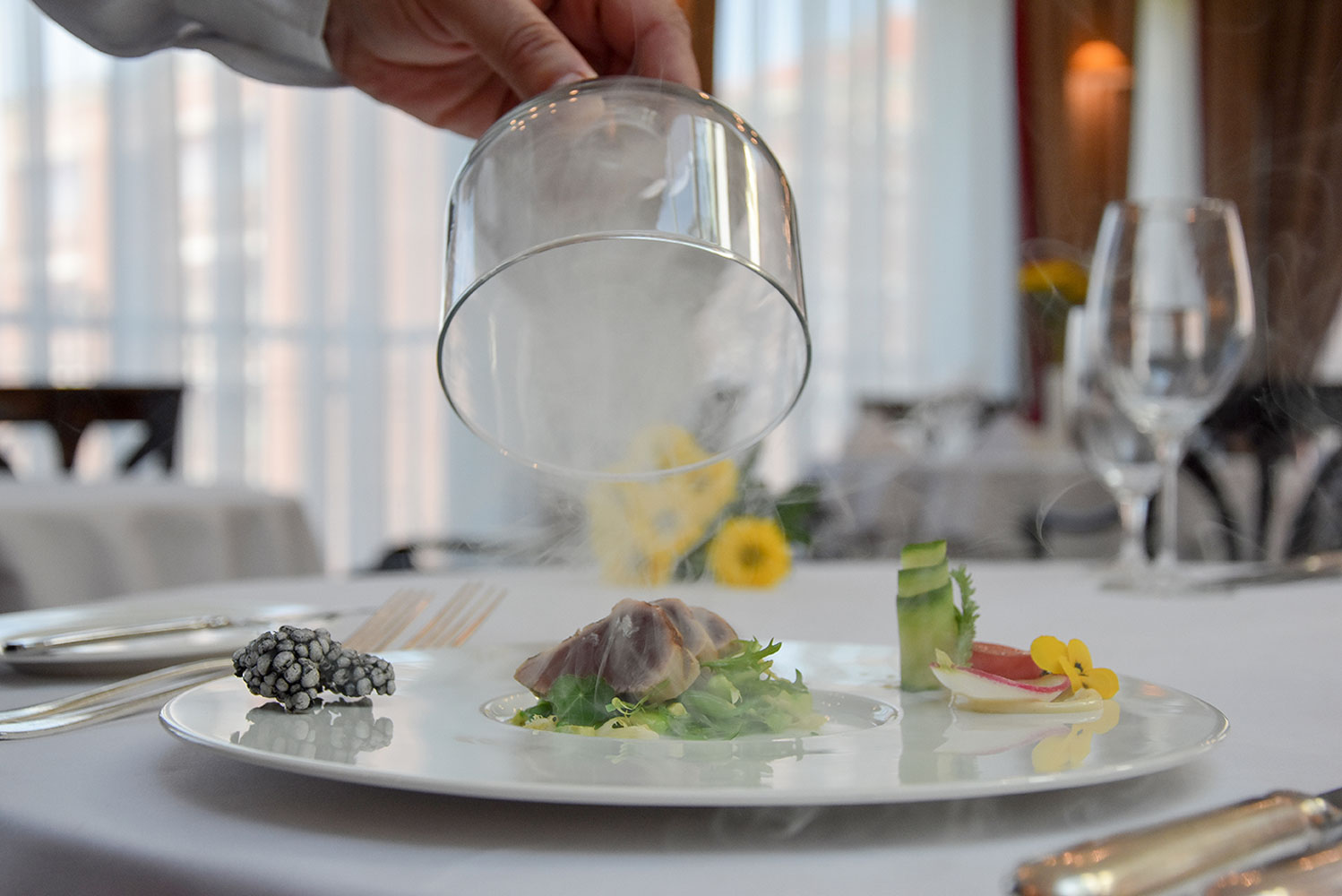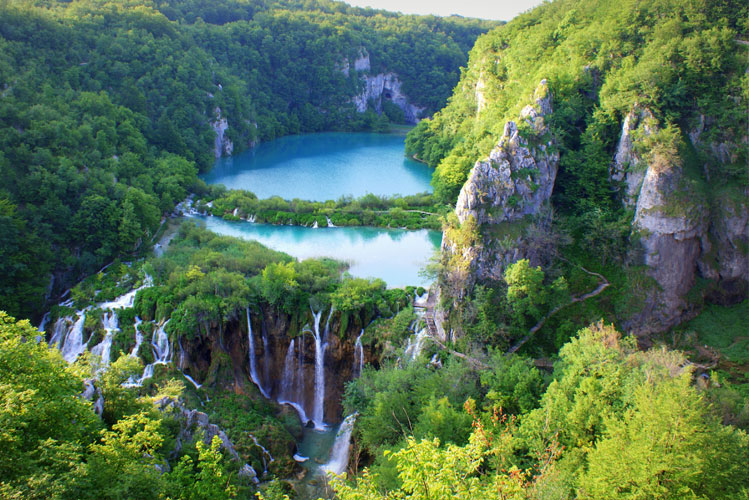Island Hvar - full travel guide
by Welcome Center Croatia | Last updated Feb 22, 2022 | Published on Feb 22, 2022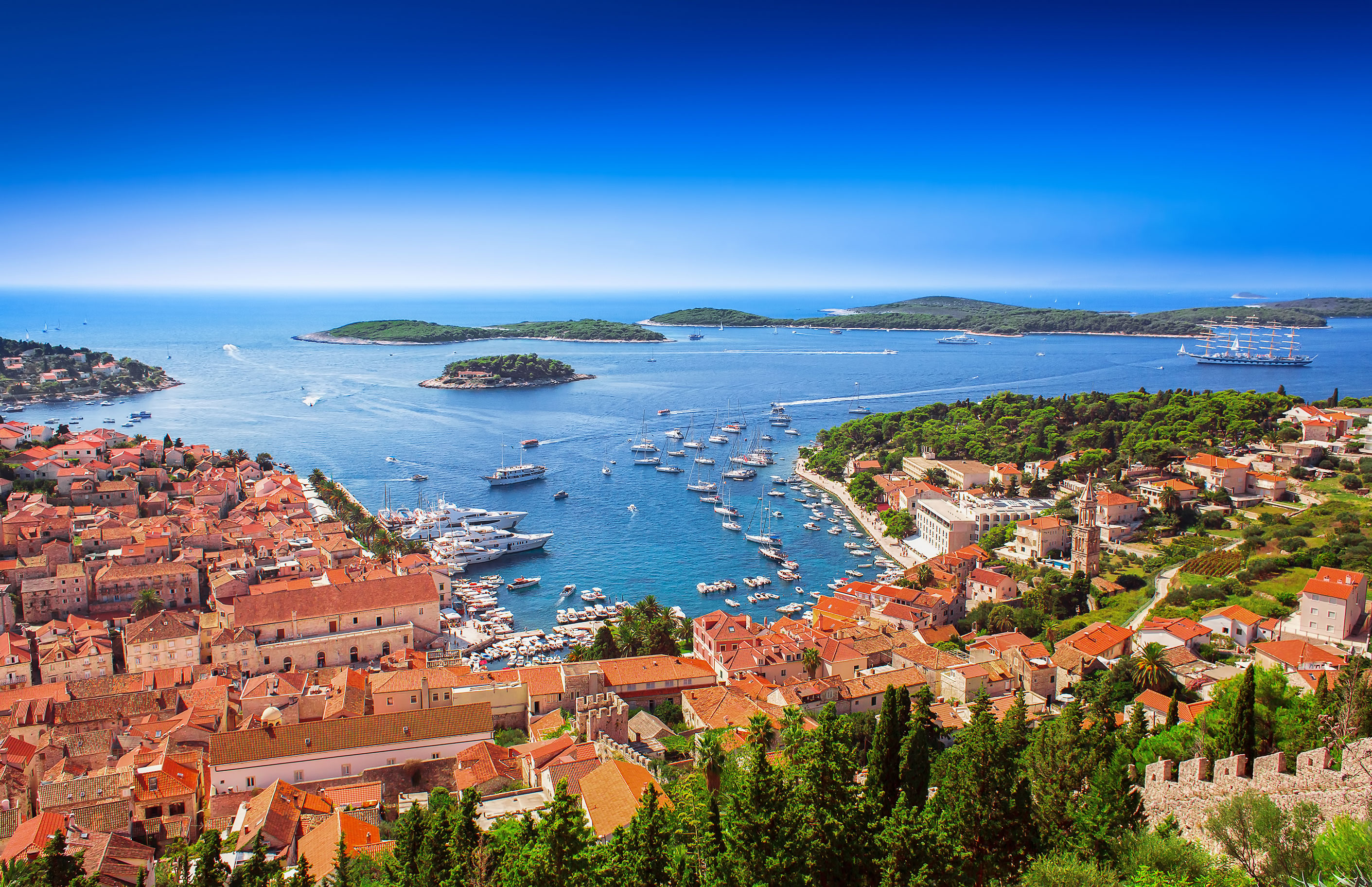
Among the Croatian islands, Hvar is the 4th most populated and it sits off the Dalmatian Coast in the Adriatic Sea. Conde Nast Traveler Magazine voted the island as one of the top 10 islands in the world. It is a popular spot for tourists and a popular location for yachting. Facts, it would seem, everyone else was aware of except me. With the knowledge that it is a popular hotspot, and it attracts boating enthusiasts, this should definitely help you to determine your wardrobe choices (think catwalk, the fashionistas are out in force here), make sure you have a budget for spending money, and arrange accommodation bookings accordingly. The latter of which needs to be secured well in advance if you are to have any degree of choice in the matter.
Hvar – The best Island in the world
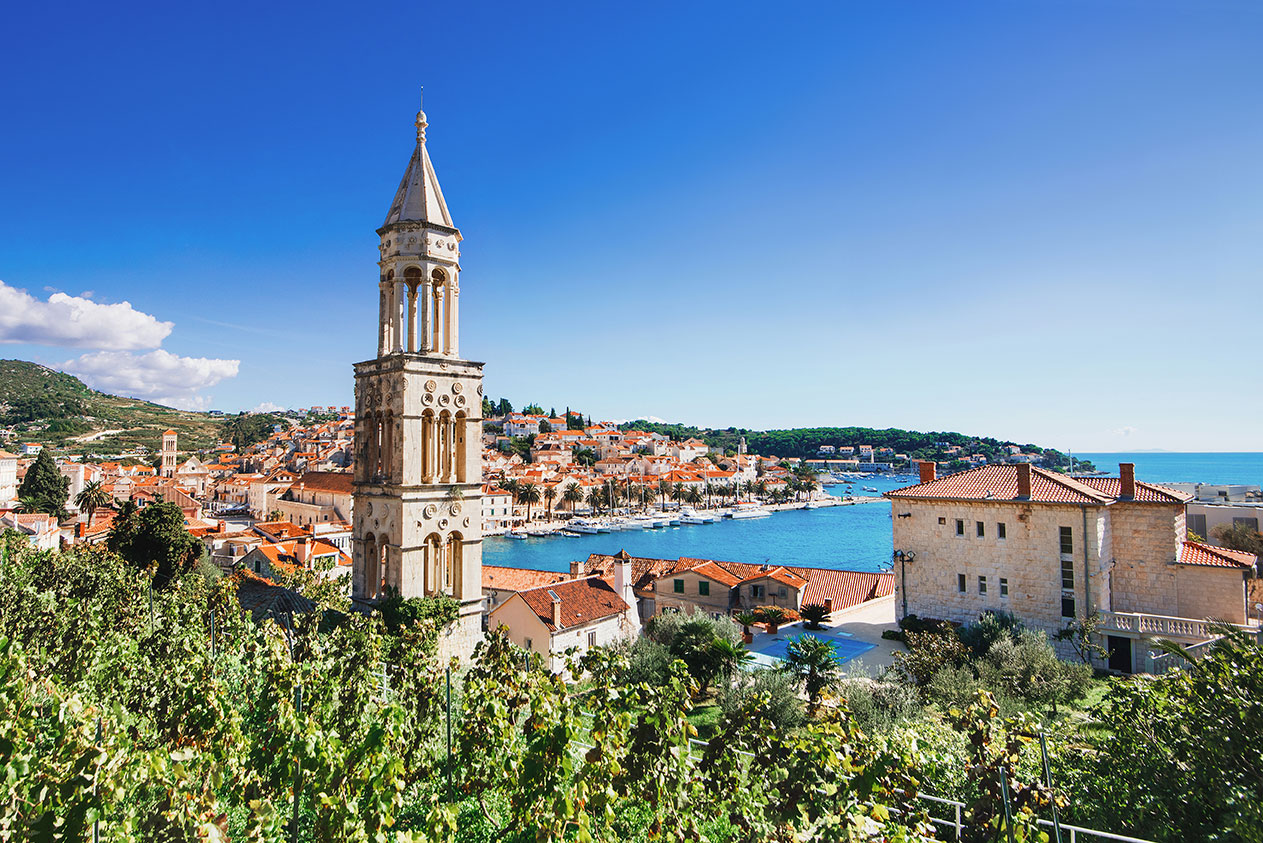
Hvar island is located off the Dalmatian coast and lies between the islands of Brač, Vis, and Korčula. Due to its favorable strategic and nautical position, the island was continuously inhabited from ancient times and is rich in various archaeological remains that witnessed different phases of the area’s rich history.
Hvar town is the capital of the island and one of the most popular tourist destinations in Croatia. It is a unique fusion of luxurious Mediterranean nature, rich cultural and historical heritage, and a mundane, tourist presence. Not to mention being the home of 5 UNESCO World Heritage sites!
Take a walk around the old cobblestone streets and enjoy the view of secular and sacred historical buildings rising aside, take a cup of coffee on the largest square of Dalmatia, visit the oldest civil theatre in Europe and enjoy this true Mediterranean jewel.
Besides its rich cultural heritage, the sunny island of Hvar is also well known for its good weather and breathtakingly unspoiled nature. Friendly people, picturesque and intact beaches and bays, virgin nature, the scents of lavender, olive trees, and wine are among many reasons the island of Hvar will leave you feeling enamored with it.
One of the most prestigious traveler awards lists is out, after more than 800,000 votes, and the results confirm what many people in Croatia already know - Hvar is the Best Island in Europe. Again.
The annual Conde Nast Traveler Readers Choice Awards, now in their 34th year, placed Hvar at the top of the Best Islands in Europe category, beating no less than 7 Greek islands in the top 20. With a total score of 96.56/100, Hvar has also been voted the 6th best island in the world, behind Bazaruto Archipelago, Mozambique (98.20), Cape Breton, Canada (97.97), Siargao, Philippines (97.77), Raja Ampat Islands, Indonesia (97.67), and Palawan, Philippines (97.54).
The Conde Nast Traveler Readers Choice Awards are also responsible for Hvar often being described as one of the world's top 10 most beautiful islands, after making the list back in 1997, just two years after the Homeland War.
Hvar's position as the best in Europe is a repeat of 2019 when it also topped the Conde Nast Readers Choice Awards.
History of Hvar

The first signs of life on the island go as far back as the 6000 B.C. Illyrians, Greek, Romans, French…are among numerous inhabitants of the island whose presence is still visible in material and non-material heritage left to testify of the past times.
One of Hvar’s notable attractions is tied into its history: Stari Grad was founded by the Greek settlers in 384 b.c. and as such is the oldest town in Croatia and one of the oldest in Europe. It is such an impressively preserved testament to the Ancient Greek period that it was added to the list of UNESCO World Heritage Sites in 2008.
Another famous historical site on Hvar is the Grapceva cave. It is the cradle of Hvar culture and civilization. According to archaeological classifications, it was a ritual place. There are visible traces of civilization from the Neolithic period and the most interesting is a drawing of a ship that is considered to be one of the oldest boat drawings in the world!
You will also find a wealth of information on the Villages of Velo and Malo Grablje, the fort Fortica (Španjola) in Hvar town that dates back to the 16th century, the Franciscan monastery in Hvar dating back to the 15th century, and more!
Taking a Closer Look at the Pakleni Islands
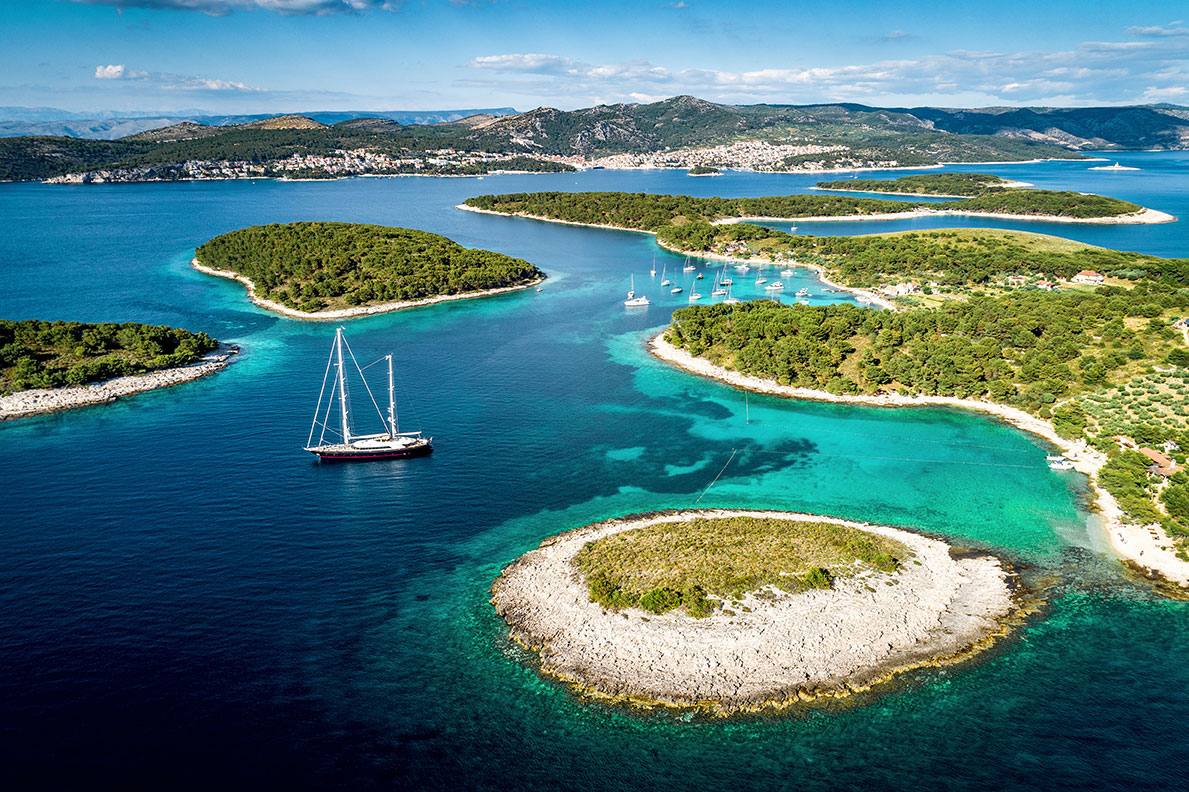
The Pakleni Islands are a chain of rocky islets just off the coast of Hvar. This beautiful archipelago is only a short boat ride and a popular day trip from Hvar town as it offers some of the most breathtaking beaches, the best snorkeling in Croatia, and some of the most amazing beach clubs in Hvar.
Across the Hvar Strait, on the Pakleni Islands archipelago, you’ll find picturesque coves, stunning beaches, hip bars, and beautiful nature. The Pakleni Islands also referred to as Paklinski Islands, are the perfect place to bask in the Mediterranean sun, swim in the clear Adriatic waters and discover new bays, and just have a bloody good time. No wonder they’re one of the most popular day trips from Hvar!
The name Paklinski Otoci is often translated as Hell or Hells’ islands but it is actually derived from paklina, an archaic name for a kind of pine resin used to waterproof boats that was once harvested on the Pakleni archipelago.
The Pakleni islands archipelago is about 10 km (6.2 mi) long and consists of 14 islands or islets but only 3 of them are actually interesting to visit – Sveti Klement, Marinkovac, and Jerolim.
Sveti Klement Island
The biggest and most popular of the islands is Sveti Klement which is home to some of our favorite bays, three settlements, and Palmizana beach, one of the most famous Pakleni Islands beaches (on the southern side in Vinogradisce Bay) with several bars and restaurants.
Marinkovac Island
Marinkovac is the second biggest island of the archipelago and an island of contrasts. This island is home to the beautiful and family-friendly Mlini and Zdrilica beaches on one side, and the most famous Hvar beach club, Carpe Diem, on the other side of Stipanska Bay. After dark, Marinkovac Island is especially popular as a clubbing destination and it’s here that you’ll find the best parties Hvar has to offer.
Jerolim Island
Jerolim Island is the closest Island to Hvar and home to a popular nudist beach. Kordovon beach is one of the oldest Adriatic FKK beaches established in the 1950s and voted by CNN as the most beautiful naturist beach in Europe.
Hvar’s top 5 wines

With its abundance of natural fields, more than 2718 sunny hours per year, perfect climate, no wonder Hvar is known as the island of wine.
The island has a proud history of winemaking, dating back to the ancient Greeks when they first planted their vines in 384. BC in Stari Grad plain (Ager), a UNESCO World Heritage site. Vineyards are spread across the island and carefully nurtured to produce the best crops. It is no wonder that over the centuries this long-kept tradition has been perfected in order to ultimately create some of the world’s best-renowned wines. At Sunčani Hvar, our concierge recommends some of the most popular wine tasting tours that will surely highlight your holiday in Hvar. From wineries Zlatan Otok located in Sveta Nedjelja, in a small bay, Duboković in Jelsa, with a traditional Croatian konoba and Carić in Vrboska, with a lovely garden and wine cellar.
The sights of vines growing from stone, located on steep slopes and UNESCO enlisted cultural heritage will remain inscribed in your memory forever. With such a strong wine story and centuries-long presence, Hvar has become an island of autochthonous wine sorts, still unknown for many. So why not try them all?
PRČ
A white wine variety very particular for the island of Hvar. Usually found on the very eastern south side of Hvar or Sućuraj. Known well amongst the locals and grown with other vine varieties, thus vineyards of these sorts are scarce. However unknown by many, this particular wine sort in island Hvar is cherished greatly and you will rarely find a wine of this character. Full-bodied, with a golden yellow color and intensive taste, this wine is perfect for white meat and fish.
BOGDANUŠA
Originated in the Stari Grad Plain, if translated literary, it means a “gift from God”. This ancient white wine tends to be dry and green-yellow to golden color and is indigenous to the island of Hvar and this is the only place where it grows. The grapes from Bogdanuša are also used to make Prošek, a sweet dessert wine in combination with other grape varieties, a common choice being Maraština, a sort that is spread across Dalmatia.
DARNEKUŠA
An indigenous and less known Dalmatian red grape variety because the grapes usually appear in blends with Plavac Mali. Cultivated only on island Hvar, with a similar variety only growing on Vis, the wine made from this grape variety is scarce and hard to find. The grapes are large, very dark, and sweet making this fine, full-bodied red wine almost appear black. Additionally, its vines are grown on some of the steepest slopes in Hvar making harvest more difficult than usual.
POŠIP
A white wine that originated on island Korčula, however, it quickly spread to the island of Hvar, where it made its home. With a fruity taste and aroma, this wine holds an authentic character and a notable refreshing taste. When you are at BB Club at Riva, Hvar yacht hotel try Zlatan Otok’s most premium Pošip, a wine that is bright, straw-golden color, and hard and dense in the glass.
PLAVAC MALI
Taste this renowned wine at our famous Butchery & Wine restaurant at Adriana, Hvar spa hotel. Kobe steak and this dark red wine are a perfect pair! Plavac Mali is one of the most respected red wine varieties and is very well known in Croatia. Exclusively grown in southern Croatia where there is an abundance of heat and sunny hours per day, which produces the best grapes. It is the cousin of the popular Zinfandel, famous California wine. Plavac Mali is best paired with red meats because of its strong and almost rustic taste.
Top things to do
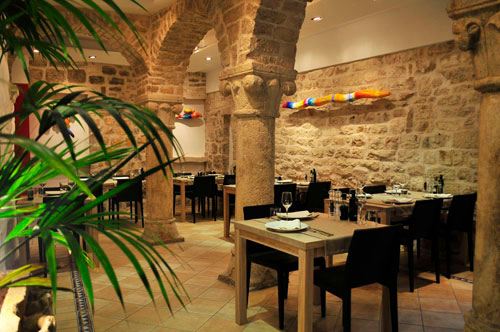
1. Gorge on gorgeous gregada
Hvar’s signature dish of gregada – a stew of fish, potatoes, onions, garlic, and top-quality olive oil – is best sampled in the historic Venetian surroundings of Giaxa.
Named after the Jakša family who once occupied this 15th-century palace, Giaxa is all about fresh ingredients, locally sourced, creatively used, and exquisitely presented.
Its gregada is centrepieced by substantial chunks of fish, served bones-and-all in the traditional way. Accompanying bread is baked on the premises.
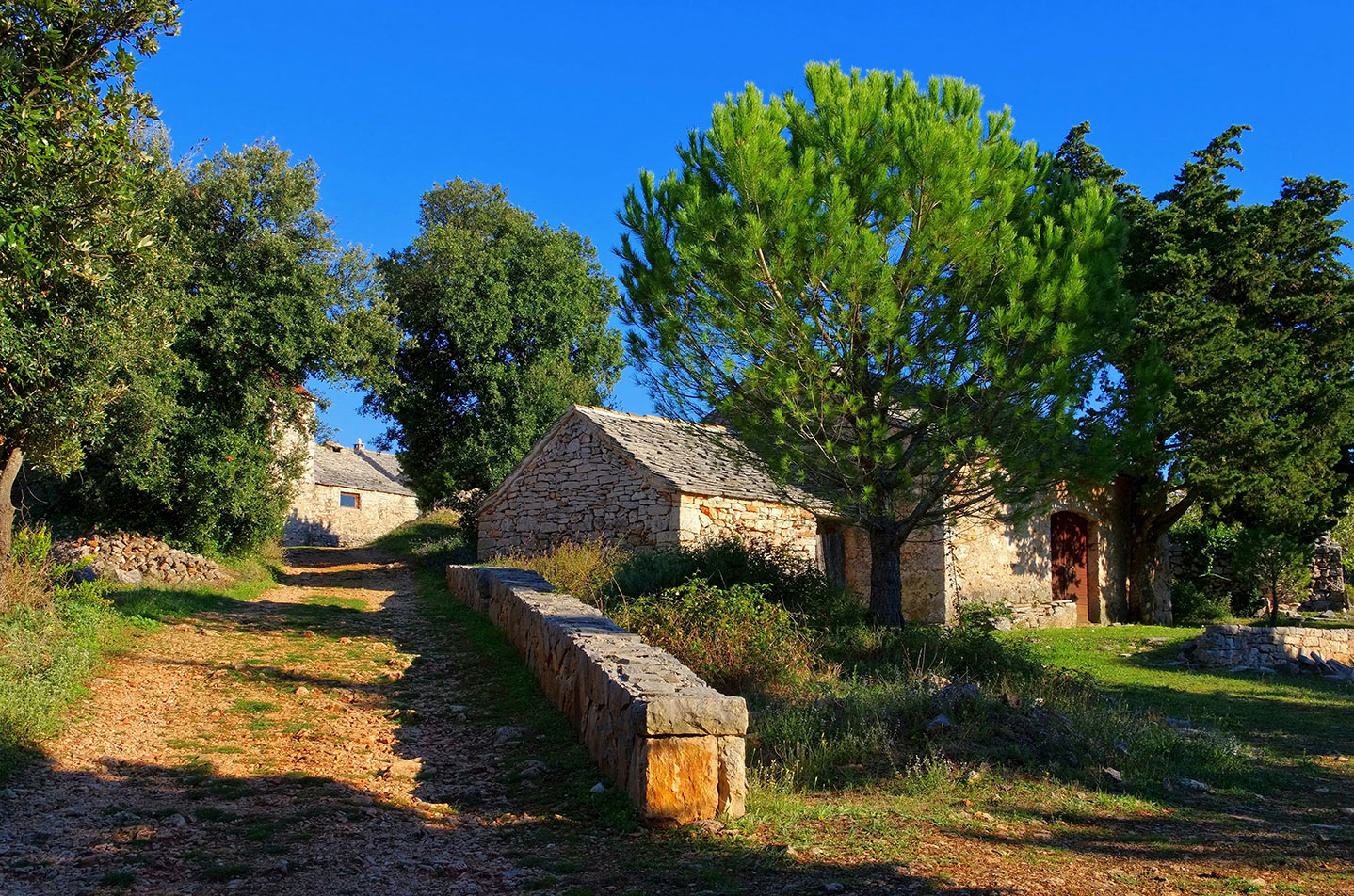
2. Dine in a deserted village.
Away from the hordes that flock around Hvar Town harbor, much of the 42-mile-long island is deserted, just expanses of pine forest and lavender field and the odd depopulated hamlet. Such is Humac. Though to have seen its resident leave a century or so ago, Humac welcomes visitors on its patron saints’ day of June 26, and on most evenings in high season when the Konoba Humac serves classic Dalmatian dishes by candlelight. This is no romantic construct but a necessity – as well as no inhabitants, Humac has no electricity.
Lamb and whitefish are prepared over an open flame. Your taxi driver should know the spot – it’s about 8km east of Jelsa, signposted on the bumpy main road towards Sućuraj.
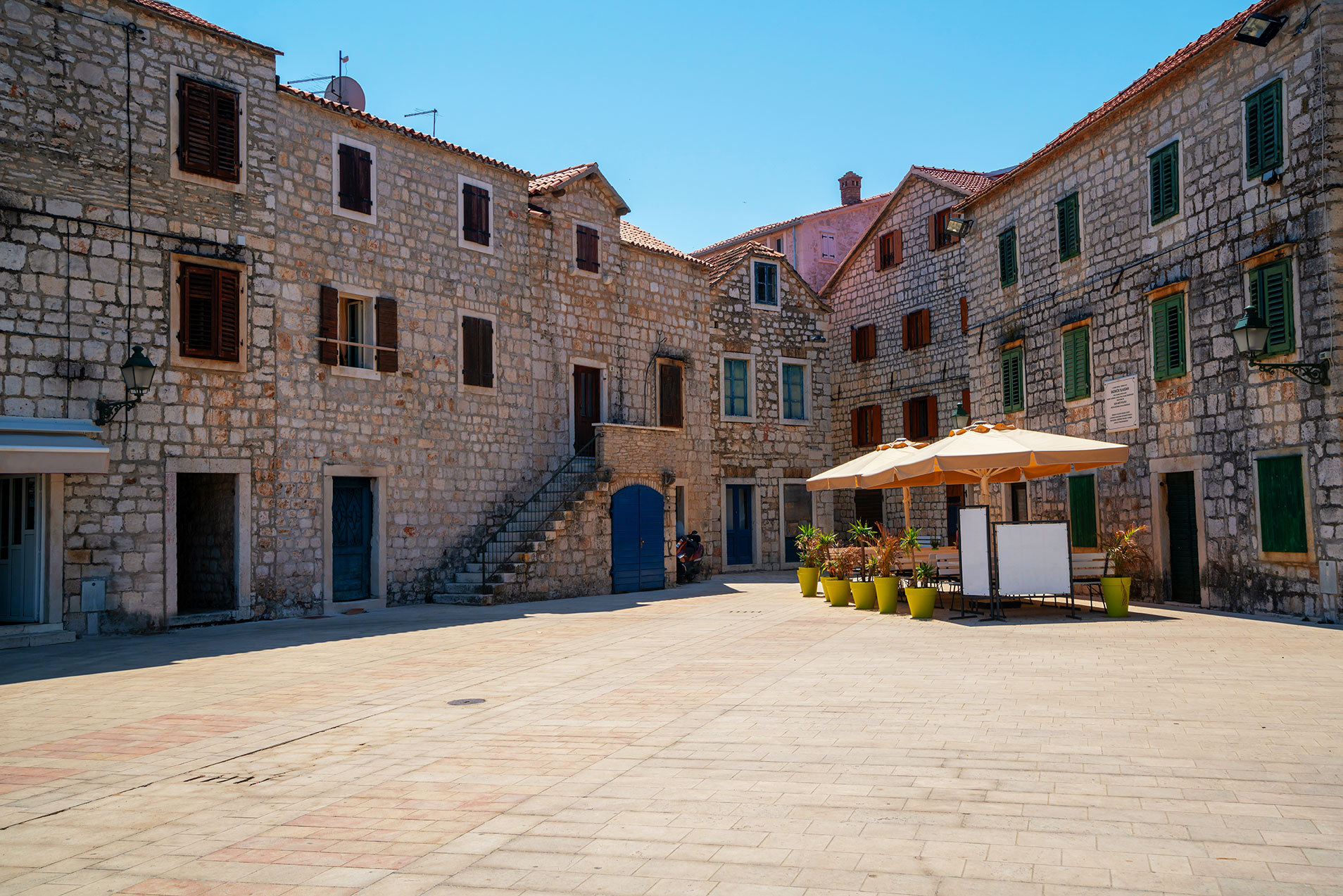
3. Discover Croatia’s first civilisation
Hvar’s main port of Stari Grad is also the oldest town in Croatia.
Here the Greeks settled from 384BC, naming the community around this safe harbor Pharos.
Finds from the time – coins, remnants of ceramics, and stonework – are displayed in the Stari Grad Museum, set in the neo-Renaissance Bianchini Palace, built-in 1896 by the four sons of a prominent local shipowner.
Discoveries from a Roman shipwreck are ranged around an adjoining room.

4. Discover the Croatian Renaissance
Set back from the seafront at Stari Grad, the Tvrdalj was built by Renaissance poet Petar Hektorović as protection against likely attack by the Turks. As it turned out, the Ottoman Navy was halted months before the poet’s death at the bloody Battle of Lepanto, near Corfu in 1571 – but only after raids on Hvar that summer. What remains today is a well-preserved fortified residence, designed with Renaissance perspective and proportion. Paid for by the poet himself – as testified by the Latin inscriptions – the Tvrdalj features a sea-water fishpool lined by vaulted arcades, a dovecote, and a walled garden. While aesthetically pleasing, the Tvrdalj was also created to sustain Hektorović, his friends and family, and sheltered residents of Stari Grad, for as long as the Turkish threat held. Grey mullet once swam in the fishpool. Further inscriptions round it read: ‘Remember that neither riches nor fame, beauty nor age, can save you from death’, and ‘Remember what will come after’.
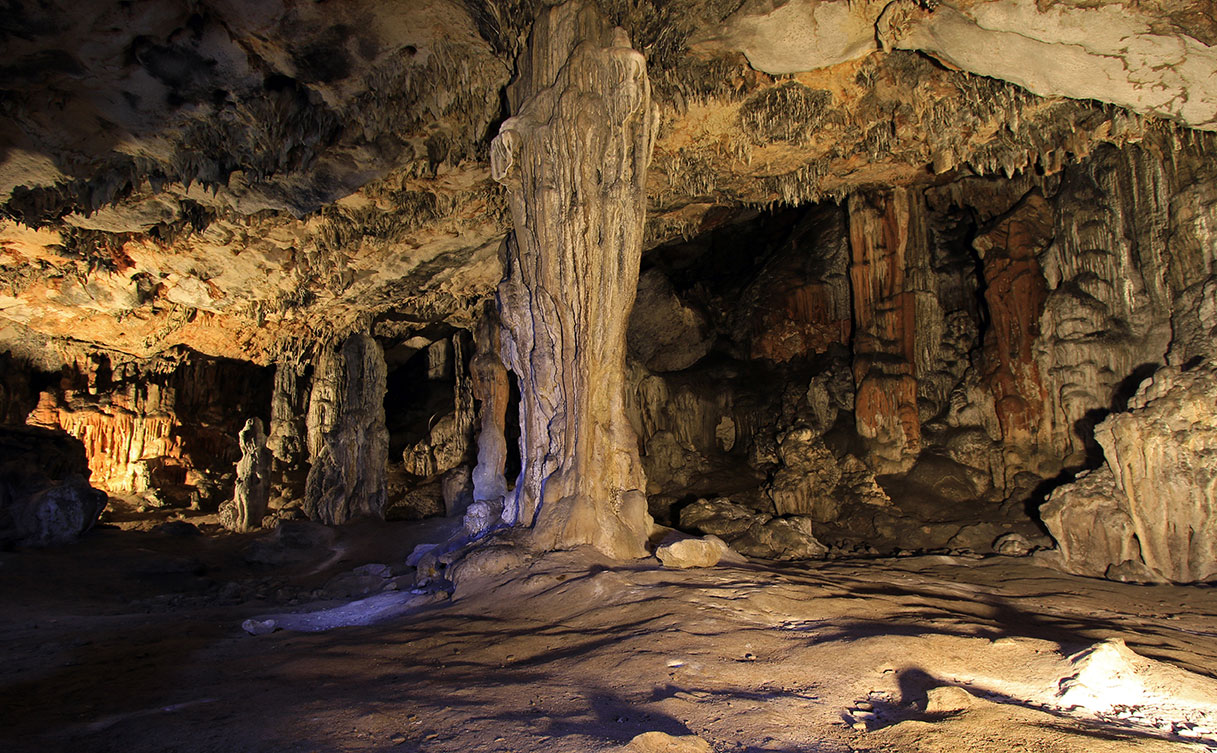
5. Meet the Flintstones
Excavated over the first half of the 20th century, Grapčeva špilja is one of the best-preserved Neolithic cave dwellings around the Mediterranean.
Containing dramatic stalactites and stalagmites, it looks pretty much as it would have done some 3,000 years ago when it was inhabited – the oldest human remains found here date back to 4,000BC.
Walking distance from the deserted hamlet of Humac, the cave is only open to visitors who book a guided tour, best organized from the nearest main town of Jelsa.


